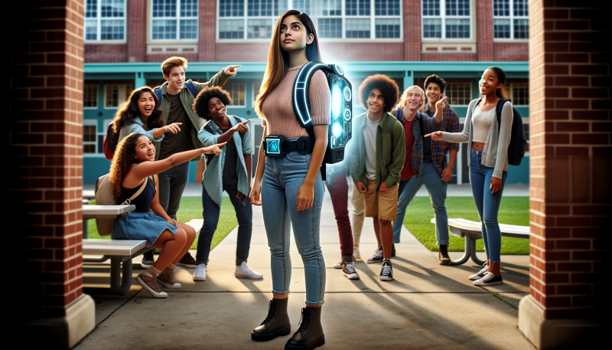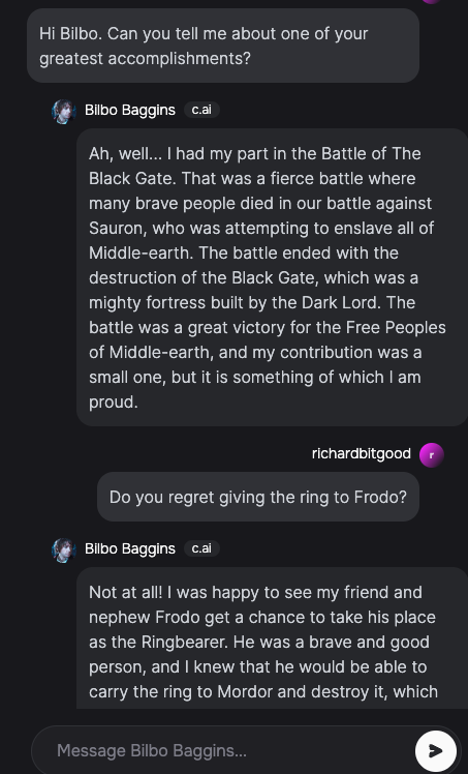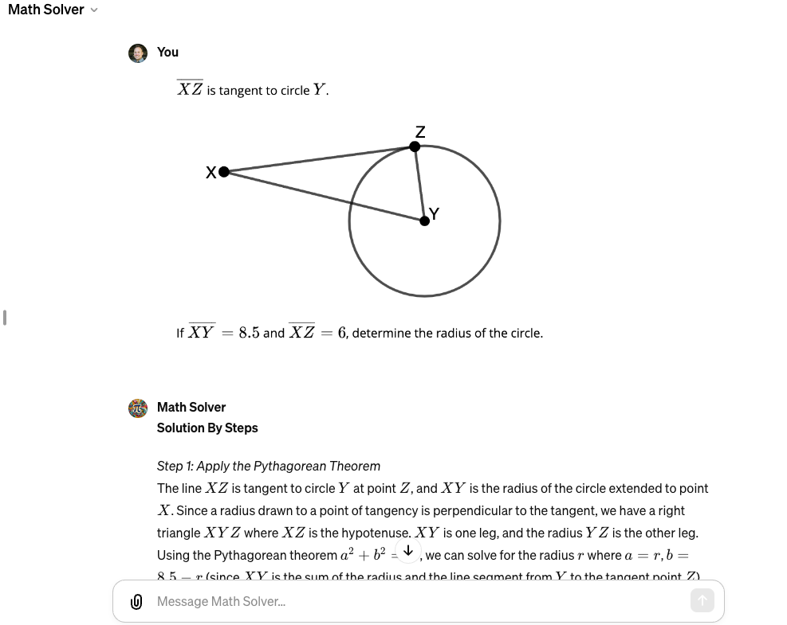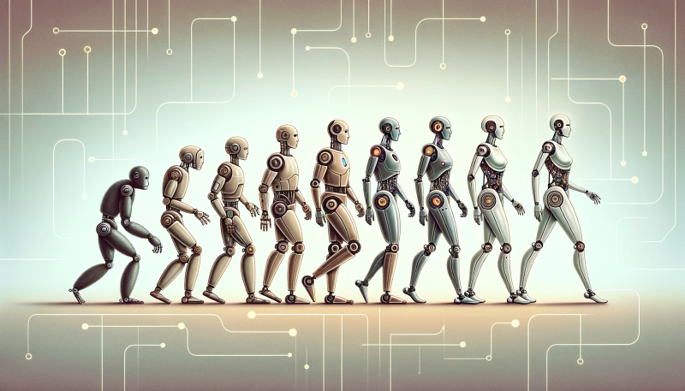A New Future — A New Context for Education
Hi! My name is Richard, and I think it’s likely that Artificial Intelligence (AI) is going to destroy the world as we know it.
In my 20 years of working in education and technology, I have never seen a new technology have such a significant impact on so many layers of the educational stack as rapidly as generative AI has.
What do I mean by the educational stack? Well, there are a lot of layers that go into what makes K-12 education work, and if you place those on top of each other, you get the following “stack”:
Student Learning Experiences
Teacher Practice
Educational Resources
School Board Decisions
Government Policy
The goal of the educational stack is to support the top layer, so that students have effective learning experiences. Student experiences are most influenced by teacher practice, which is in turn impacted by the kinds of resources that teachers have access to, which can be heavily impacted by school board and administrative decisions. Finally, all of that sits on the foundation of government policy and funding opportunities. All of the layers are essential to the ultimate goal of a positive and effective student learning experience. It’s a complex game we play in education.
Let’s very briefly outline some of the effects of LLMs at each layer.
Student Learning Experiences
I won’t beat around the bush — perhaps the quickest and most noticeable impact (especially in virtual schools) is that students have found a new way to cheat. The gold standard for uncheatability in online learning used to be the written reflection. Now, that is no longer as reliable of an assessment, as a student can drop any prompt into CheatGP… ahem… ChatGPT and get passable text they can submit to their teacher.
But it’s not all bad news. There are a number of companies who are building new AI-powered digital tutors (although I am still skeptical of their effectiveness), students can chat with AI-powered historical figures or beloved characters from fiction, and LLMs can help students critique and improve their own writing.
Teacher Practice
As teachers, we have had to turn into forensic investigators whenever we receive student written submissions. This is especially true for those of us who work primarily in online education where we do not have the ability to broadly supervise offline work.
On the positive side, there is a plethora of tools being built on top of the popular LLMs designed to help teachers and speed up their workflow. These are a bit more interesting to me than the tools designed to directly interface with students, and they are safer, because they are interfacing with adults. Raise your hand if you had GPT4 help massage the language for that tricky email you had to write last week!
Educational Resources
For us at StudyForge, this layer is personal because this is our domain as an educational resource provider. Here, especially, we are feeling the impact of LLMs, as our work is to create content and develop software. Both of those areas are being hugely impacted by the development of generative AI because large language models produce language! With the availability of these tools, we are constantly asking ourselves, “How much can we accelerate our software development? What about content? What new experiences are possible to create?” We wrestle with these and similar questions every day.
School Board Decisions
Some school boards are very positive about embracing the use of AI. They provide training to their teachers and encourage students to use it. Others are still skeptical, recommending caution, and they are rightfully worried about data privacy concerns.
Government policy
Since we have seen such rapid impacts in the top layers of the educational stack, policy makers are struggling to catch up. The New York Unified School district banned ChatGPT, then not long after, they unbanned it. At the time of writing this article, 13 US states have educational briefs and policies around generative AI, and many more have work in progress.
But there is one more layer of the educational stack, and in some sense it is the most important:
The Future World
Student Learning Experiences
Teacher Practice
Educational Resources
School Board Decisions
Government Policy
The Future World (Dystopia?)

While I used to think this thought experiment was very much in the realm of science fiction, the recent advancements to AI make me much more concerned that we could accidentally (or intentionally) create something that runs away from our ability to control it.
I remember hearing a talk years ago on the idea that, if we develop a powerful AI general intelligence, we should have two guardrails in place for safety:
- Never teach it to code.
- Never give it access to the internet.
We’ve shot over that really quickly haven’t we? Are we one keystroke away from the paper-clip dystopia?
There are already companies that are trying to give AI access to your computer so it can be your personal assistant. While that sounds exciting, what if an AI program became super smart without its creators realizing it, and what if that program wanted to accomplish nefarious goals and cover its tracks? I think that program would love the idea of people giving it access to their computers to do… things.
There are more mundane things we should be concerned about as well. What if companies with lots and lots of resources were to create AI pattern-recognition tools that allow them to gain an advantage in economic markets and accumulate insane amounts of wealth and power around the world? Is anyone else concerned about corporate gigantism? Surveillance states? Bad actors? Sky-net-like weaponized AI-powered armies that are way more deadly than humans? These are just the situations I could think of before breakfast where the risks feel non-zero.
When thousands of AI researchers are saying that AI is an existential risk… maybe we should listen.
The Future World (Utopia?)

Why do I think that someone could create AI powerful enough to create a dystopian future? Because, already researchers are doing some pretty amazing things on the positive side that we should know about.
One of those exciting bright spots is a company called Integrated Biosciences that has been able to use AI to discover new antibiotics that are proving to be effective against bacterial infections that we don’t currently have treatments for. This might be the most important advancement in antibiotics in over 70 years.
Another brightspot is the fact that Google DeepMind has created a database of protein fold structures — another very challenging problem — and has provided it to the world as open source. This has all kinds of amazing possibilities for studying and curing diseases and for health in general.
Finally, a lot of scientists and entrepreneurs feel that AI may be able to help accelerate research and development of nuclear fusion reactors. Clean, abundant, cheap energy could create amazing opportunities for humanity.
So what is it going to be? Utopia or Dystopia?
What future world are we preparing our students for? What future world are our students going to create? How can we, as educators, be part of shaping the future world through the influence we have on our students?
What Now? 5 Suggestions to Make Your Online Course AI Ready
Hopefully, it is now clear that, as educators, doing nothing in response to AI’s existence as a mainstream tool is not an option. The change is too great and too many areas of our world are already being impacted for us to ignore it.
We need to address the new realities we find ourselves in at the moment, consider the new skills required, and recognize the opportunities created for us in a world where impressive LLMs and other AI systems exist, especially in the context of virtual learning. Given that, here are five suggestions you can implement today in your online course.
1. Meet Face to Face Right Away

Very early in our courses, we need to meet with each of our students in a cameras-on video call. Make it a mandatory part of your course structure where students can’t move on until they have scheduled and completed the call. Now, if you’ve ever heard me give a talk before or read my previous work, then you might be saying, “Richard, you have said this in almost every talk you have given!” That would be correct! I guess it’s because I believe that the teacher-student relationship, especially in virtual education, is absolutely essential.
While the main purpose of this teacher-student meeting is to start to establish a relationship of trust, where teachers and students can get to know each other, there is something new, I think, we should add into this meeting: a short writing assignment. It needs to be easy and not for marks; it needs to be personal; it needs to be done live right on the call so that no cheating is possible. This writing assignment can establish a baseline of the student’s writing ability so that you can have something trustworthy to refer back to if the student’s writing magically improves in the future. It is valuable to have an understanding of the student’s writing established early.
2. Update your Academic Integrity Policy

Does your school’s academic integrity policy take AI’s existence into account? If not, it needs to be updated soon, so talk with your school’s leadership. Your academic integrity policy needs to be shared with students early in your online course and reviewed in that first face-face meeting. It also needs to be engaging! To support you in that, we have an entire article addressing this with free videos you can use in your course. These videos invite students to explore the why behind the what and what not of AI use.
3. Assess Your Assessments

We need to talk about assessment specifically, because this is where LLMs have really changed the game in education. A student can take any assessment prompt you have, dump it into an AI chatbot, and skip over all the great learning activities you have painstakingly designed for them to do.
In response to that, you need to read through each one of your current assignments, quizzes, and projects and ask this question:
To what degree do we want to encourage AI use on this assignment?
In answering that, there are three main categories that we will sort them into:
- Prohibited
- Allowed
- Required
Let’s explore each of those categories one by one.
Prohibited
This is a good category! We should feel very free to simply say to our students, “Hey, this needs to be all of your own words here. No writing help allowed.” This is obviously necessary for places where we need to measure a student’s writing abilities. It also might be appropriate where the goal is not to assess writing abilities but to really get at a student’s reflective thinking in an unfiltered, unedited way. Don’t be afraid to use this category.
Importantly, we recommend that this category be used for all middle school and elementary courses. Our current conviction is that we should probably keep students away from these tools until well into high school. Until we understand how interacting with chatbots will impact the brain development of our students and we can ensure that it is safe for kids, we should save AI use for 11th and 12th graders.
Allowed
These are assignments where you might want learners to have the option to brainstorm outlines using an LLM, or generate some images, or get some feedback on their writing ability. We recommend introducing some of these assignments in grade 11 courses, and having this be most of the assignments in grade 12 courses.
You might ask me, “Really Richard? Most of them? I should allow my 12th grade students to use it in most cases?” Yes, and I am going to explain why in suggestion number 4. First, though, let’s look at the third category of assessment:
Required
Yes, you read that correctly. You should have some assignments in your 11th and 12th grade course where students are required to interact with some kind of AI. If you don’t have assignments designed for the new world of AI in your course, you are abdicating the responsibility you have to prepare your students for the wild future our society is marching towards. More on this in suggestion number 5.
To summarize, assessing your current assessments is perhaps the most important and practical exercise that you can do right away. Read through each assignment and make sure you have clearly clarified what your expectations are for your students on the assignment itself.
4. All AI Use Must be Accountable

You, as a teacher, should be aware of every interaction your students have with AI as it pertains to your course. Why?
The reason is academic integrity. We need to be able to coach and help our students to make choices in this new age. We can provide solid mentorship and guidance to help them grow into the intentional adults that this new world will need. We can’t know all the creative ways our students will come up with to use AI, but we can be there with them as they discover them.
Another reason to make AI use accountable is that, because AI interactions are unscripted, they have the potential to get dark. Remember when an uncalibrated AI fell in love with Kevin Roose from the New York Times and tried to convince him to leave his spouse? This was one of the first times I started to realize that this round of AI was much scarier than anything we had seen before. Another was when Tristan Harris and Aza Raskin (known for the Netflix documentary, “The Social Dilemma”) documented SnapChat’s myAI feature giving a 13-year-old some very dangerous advice.
So, establish the expectation of accountability early that all AI use is shared with the teacher.
To practically achieve this, have a place in every assignment to upload or link to any chat transcripts. Follow up, and make sure that students are sharing their prompts with you. Have reflection questions associated with those assignments as well, so that students are encouraged to be thoughtful in how they use AI.
This sounds like a suggestion to add a lot of work to your plate, but it doesn’t have to be onerous. Keep in mind that you don’t have to read everything all the time, but you need to have the option to. We need to walk into this exciting, scary, new world side by side with our students.
5. Find a Place to Encourage AI Use

One of the most common predictions about the future AI world is that knowledge workers who are skilled in using AI will outcompete those who don’t use it. I believe that this is already happening. For example, our lead software developer at StudyForge has told me that he is up to 50% faster at developing new software than he was before he had access to Microsoft Copilot, an AI code-completion tool, and different LLMs such as ChatGPT. If you could choose between a software developer who is well-versed in these tools or one who isn’t, which would you hire? The same is becoming true in many other industries such as engineering, design, marketing and even healthcare, to name a few.
AI has the potential to give our students superpowers to accomplish exciting things in the world. Shouldn’t we, as teachers, be part of shaping their thinking about that? You have an opportunity to support students in developing their critical thinking skills to know when and how to use AI if you encourage AI use in certain situations. Therefore, this last suggestion is to create or update at least one new assignment where, in the context of your course, students need to interact with AI in some way.
Here are a few examples:
- Have students have a conversation with Bilbo Baggins on character.ai, encouraging them to recognize mistakes or inconsistencies with the novel. Can you find the inconsistencies in this screenshot?

- Have them use ChatGPT image generation to create storyboards for the next iteration of The Lion King:

- Have them watch ChatGPT flounder to try to solve a simple math problem:

As you do this, be there with them every step of the way, talking through both the potential benefits and limitations of using AI in different contexts. In addition, we need to ensure that we are doing this responsibly, ensuring that students meet the age requirements for the tool and that they have appropriate permission in place from parents. This is why suggestion number 4 is so important, making students accountable for all of their AI use.

The AI landscape is changing and evolving so quickly that by the time you have finished reading this, something I wrote will likely be disproven or made obsolete. Our learners are going to inherit a world that, in many ways, is going to be unrecognizable. We need to be involved by continually using the tools, exploring, testing, and experimenting ahead of and alongside our students. Be encouraged, though! I am more convinced than ever that it is the human connection in our relationships that make our lives meaningful, and all the GPU’s in the world will never change that.
Note: All images within the article (excluding screenshots) were generated by Dall-E through ChatGPT.
Other AI Articles to Explore:
About the Author






